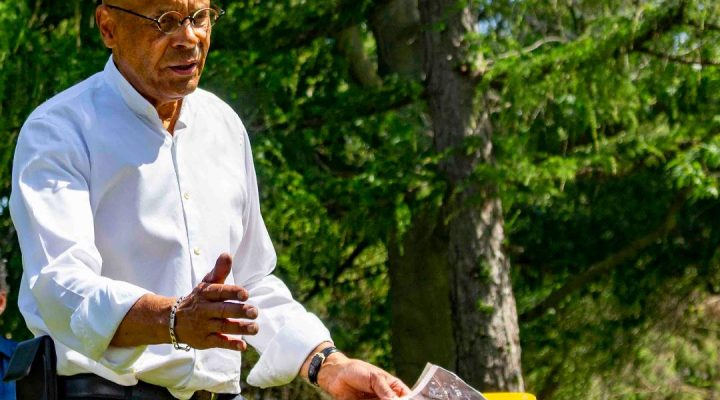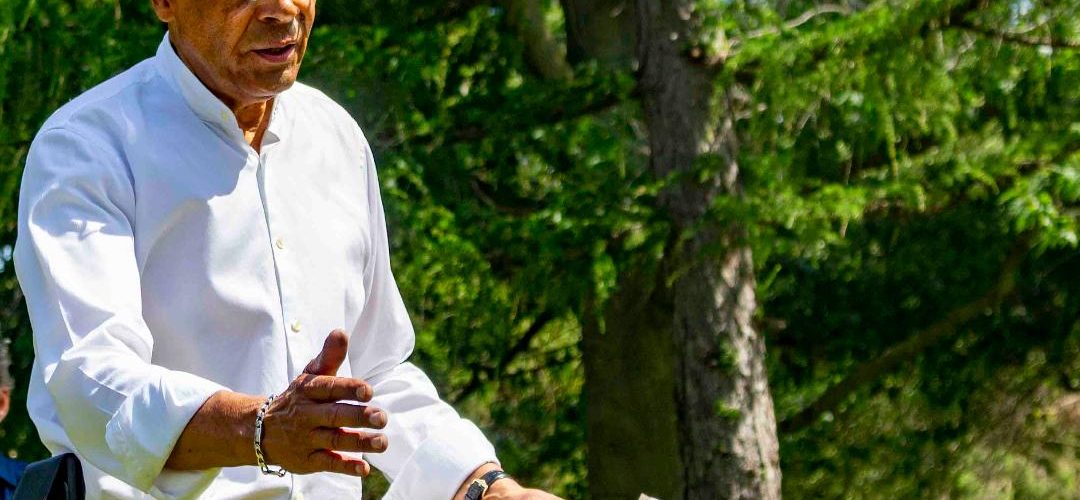James Russell is dismayed by an apparent lack of commitment to preserve Black grave sites in Canada. He’s so disturbed, he has taken it upon himself to secure their dignity.
‘What bothers me is this ground has no markers on it,” he said, describing a cemetery site he is scouring. “It was just labeled ‘Negro’ burial ground; hugely disrespectful.”
Russell is a Black Canadian filmmaker who is using ground-penetrating radar to locate the burial plots of early Black Canadians in Niagara-on-the-lake, Ontario, on the border with New York.
Russell is working at a site, nearly two centuries old, where a Baptist church house existed among some of the earliest Black Canadian communities. It is a vital historical, cultural and religious location.
At the end of the American Revolution, mass emigration transported enslaved black people from the United States into Canada. Thousands settled in the province of Ontario, which then was called British North America. They brought with them their Baptist faith, which they had practiced as slaves.
In the 1800s, Black Baptist churches became important refuges in Ontario, reported Lana Talbot, clerk and heritage coordinator for First Baptist Church in Sandwich, Ontario.
What happened to Black grave sites around the church is a mystery for the ages.
That helps explain why Russell is moving his radar around the site of a long-gone Baptist church in a quest to find graves of Black folk lying there. The church was established in the 1820s by John Oakley, who came to the community in 1793 from the United States. Russell has located the foundation of the church building, which became property of the town in 1893 and eventually became a tool shed on a farm
What happened to Black grave sites around the church is a mystery for the ages.
Many of the headstones may have fallen over and disintegrated into the soil, Russell theorized. But he considers other causes. “One 90-year-old already told me that around 1950, a group of teenagers started to vandalize the cemetery, and one of the cemeteries was the Negro burial ground,” he explained, noting some locals think the teens kicked over all the headstones.

Technicians working on site (Photo/James Russell)
“So, we really don’t know what happened,” Russell said. “A couple of people have reached out to me that people stole the headstones and used them as the walkway stones of their houses,” he added, shrugging in sadness.
Russell originally asked the Niagara town council to approve exploration of the site and pay the $2,000 cost of renting the radar. The city did not come through with the funds, but he received approval to conduct the project. So Russell took on the expense himself.
During the radar work, which took about five hours, several people stopped to ask Russell about his work.
“A resident gave me $100 on the spot, a town councilor wrote me a check for $50, and another resident went to town to buy spray paint,” he said. “We paint where the graves are into a rectangle and put a Canadian flag.”
The local Niagara museum’s records indicate 10 Black people who were buried in the “Negro” burial ground, but Russell has found 28 bodies and 19 headstones. He’s confident there are more.
The burial ground has been ignored 150 years in Canada, a country that takes pride in documenting the burial site of white heroes.
“We think the ground-penetrating radar just didn’t pick them all up, because either they are buried deeper or the ground has been disturbed,” he said.
Intriguingly, the burial ground has been ignored for 150 years in a country that takes pride in documenting the burial site of white heroes. However, Russell is diplomatic when asked if this points to the systemic erasure of Black Canadian identity.
“I’ll err on the side of positives,” he said. “The quick answer is nobody cared about it.”
Russell remains consumed by researching who exactly is buried on the site. He wants precise details.
“I have asked the registrar of records in Toronto, the Southern Baptist League and the Ontario archives if they have records,” he reported. “We have headstones, which is great, but we need the names of persons buried there so we can match them to their graves.”
In Canada, only archeological companies are authorized to dig up graveyards, so Russell sought an estimate of the cost.
“They came back to me with a quote of $59,000,” he said. He’ll try to get the town to fund the project, but he is realistic. “It could take a year or two years to get things going,” he conceded.
As Black Baptists in Canada struggle with the sensitivities of race and erasure of Black identity in Canada, Russell doesn’t flinch on why his search for Black burial sites is important, despite the hefty bill and lack of institutional support.
“The people who are buried in the Negro burial ground have grandchildren, who I am sure would love to know where their ancestors are buried,” he explained. “It’s a question of respect.”
Ray Mwareya is a freelance immigration journalist who lives in Canada.
Related articles:
What to do if you unearth a history of slavery in your church, college or institution?


